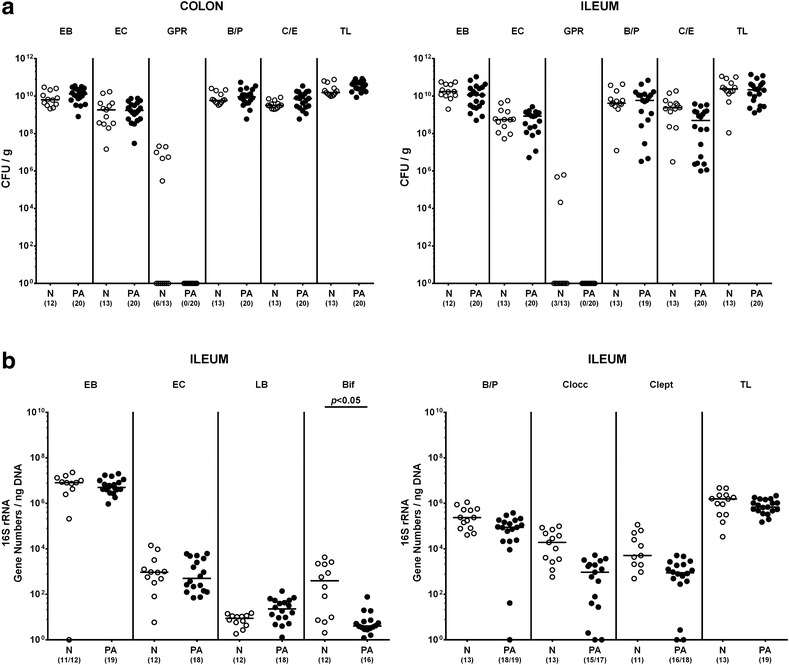Fig. 3.

Intestinal microbiota analysis in multidrug resistant P. aeruginosa infected human microbiota-associated mice suffering from acute ileitis. Human microbiota-associated mice were perorally challenged with T. gondii ME49 to induce acute ileitis as described in "Methods" section. One group of mice (PA, filled circles) was additionally infected with MDR P. aeruginosa 3 days following ileitis induction by gavage, whereas non-infected mice served as controls with acute ileitis only (N, open circles). Main intestinal bacterial groups were quantified by culture and molecular analysis of luminal colon and ileum samples at day 7 post T. gondii infection. a Numbers of viable enterobacteria (EB), enterococci (EC), Gram-positive rods (GPR), Bacteroides/Prevotella spp. (B/P), Clostridium/Eubacterium spp. (C/E) and the total bacterial loads (TL) were determined in colonic and ileal luminal contents by culture and expressed as colony forming units per gram (CFU/g). b 16SrRNA of the main ileal bacterial groups including enterobacteria (EB), enterococci (EC), lactobacilli (LB), bifidobacteria (Bif), Bacteroides/Prevotella spp. (B/P), Clostridium coccoides group (Clocc), Clostridium leptum group (Clept) and total eubacterial loads (TL) are expressed as gene numbers per ng DNA. Numbers of animals harboring the respective bacterial group are given in parentheses. Medians and significance levels (p values) determined by Kruskal–Wallis test are indicated. Data shown were pooled from three independent experiments
